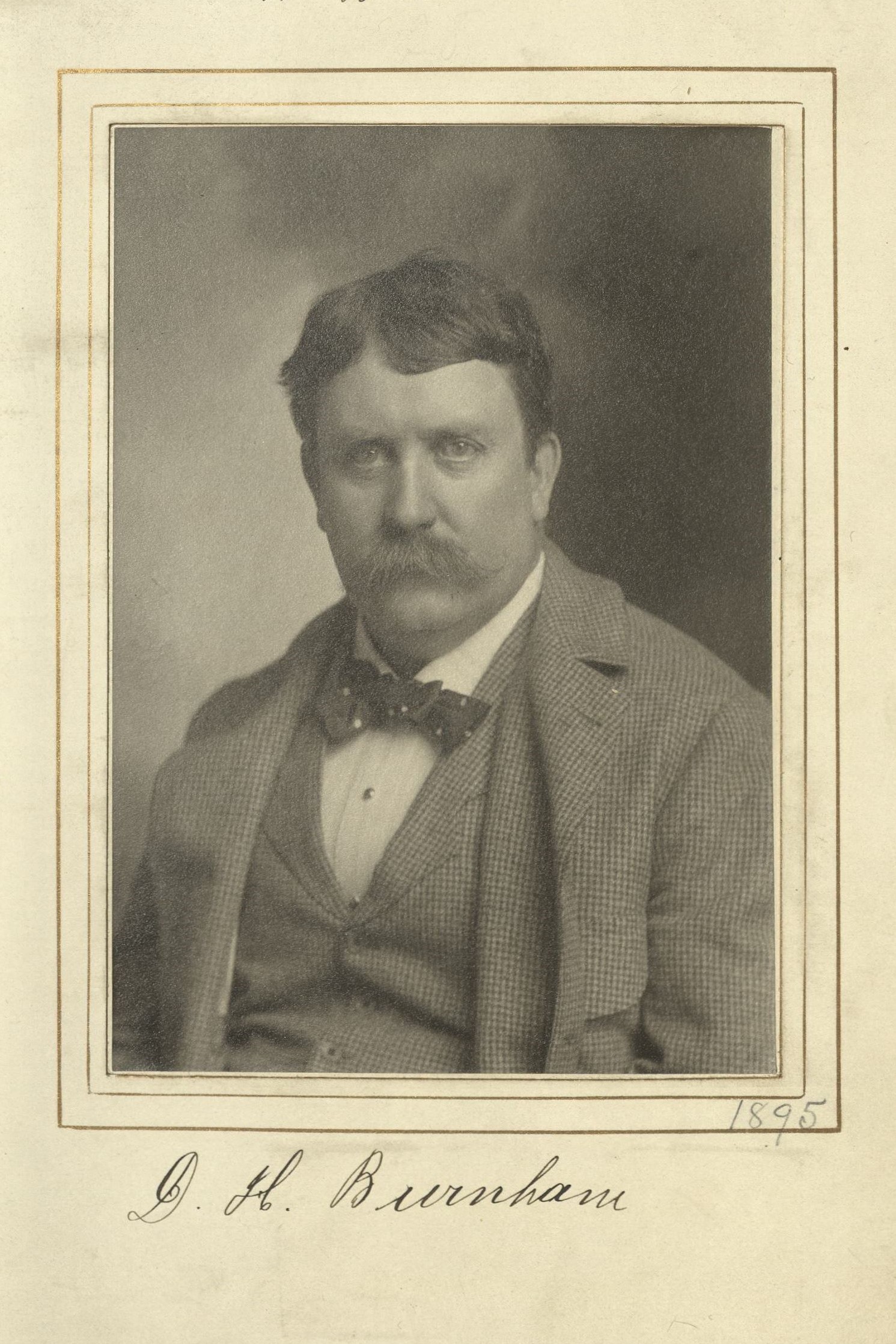Member Directory,
1847 - 1922
Daniel H. Burnham
Architect
Centurion, 1895–1912
Charles Follen McKim and Richard Morris Hunt
Henderson, New York
Heidelberg, Germany
Age forty-nine
Chicago, Illinois

Century Memorial
Daniel Hudson Burnham, one of the greatest of organizing architects and a far-seeing remodeler and beautifier of cities, died in Heidelberg last June at the age of sixty-six [sic: sixty-five]. Fundamentally and preëminently, to use a phrase of his own, he was a good business man with a knowledge of building. These are homely words, but they may mean much, and, in Burnham, their meaning was carried to the highest power. In 1873 he formed a partnership with John W. Root, a talented and original designer. It was a happy combination. Whatever the keen mind of Burnham could conceive, and his inspiring personality impress upon his clients, Root could admirably execute. The firm soon led in the movement for many-storied commercial buildings in Chicago, constructed at first with walls of solid masonry and then with the riveted steel frame.
When Chicago was selected for the Columbian Centennial Exposition, with Frederick Law Olmsted as landscape architect, Root was chosen as architect-in-chief. He and Olmsted laid out the Fair and selected the architects for the several buildings. Then Root died, and Burnham was chosen in his place as Director of Works. His masterful completion of the work won admiration for him throughout America and Europe. Thenceforth the largeness of Burnham’s mind was to be made apparent in his far-seeing plans for the beautifying of cities. His reputation led many towns to seek his aid. Along with the directing of an enormous architectural business in his office in those same years, it may be said he changed the map of Cleveland, devised a plan for the rebuilding of San Francisco, gave advice to Brooklyn, acted as chairman of the National Commission for beautifying Washington, and was even sent by the Government to reconstruct Manila. It was there that he said to the people, with his practical wisdom: “The delightfulness of a city is an element of the first importance to its prosperity, for those who make fortunes will stay and others will come if the attractions are strong enough, and the money thus kept at home, added to that freely spent by visitors, will be enough to insure continuous good times.”
Henry Osborn Taylor
1913 Century Association Yearbook
Related Members
Member Directory Home-
 Elmer E. GarnseyDecorative ArtistCenturion, 1896–1946
Elmer E. GarnseyDecorative ArtistCenturion, 1896–1946 -
 Richard Morris HuntArchitectCenturion, 1855–1895
Richard Morris HuntArchitectCenturion, 1855–1895 -
 Charles Follen McKimArchitectCenturion, 1882–1909
Charles Follen McKimArchitectCenturion, 1882–1909 -
 Charles MooreAuthorCenturion, 1907–1942
Charles MooreAuthorCenturion, 1907–1942 -
 Frederick Law OlmstedLandscape Architect/JournalistCenturion, 1859–1903
Frederick Law OlmstedLandscape Architect/JournalistCenturion, 1859–1903 -
 W. Symmes RichardsonArchitectCenturion, 1911–1920
W. Symmes RichardsonArchitectCenturion, 1911–1920 -
 Homer Saint-GaudensAuthorCenturion, 1911–1958
Homer Saint-GaudensAuthorCenturion, 1911–1958




